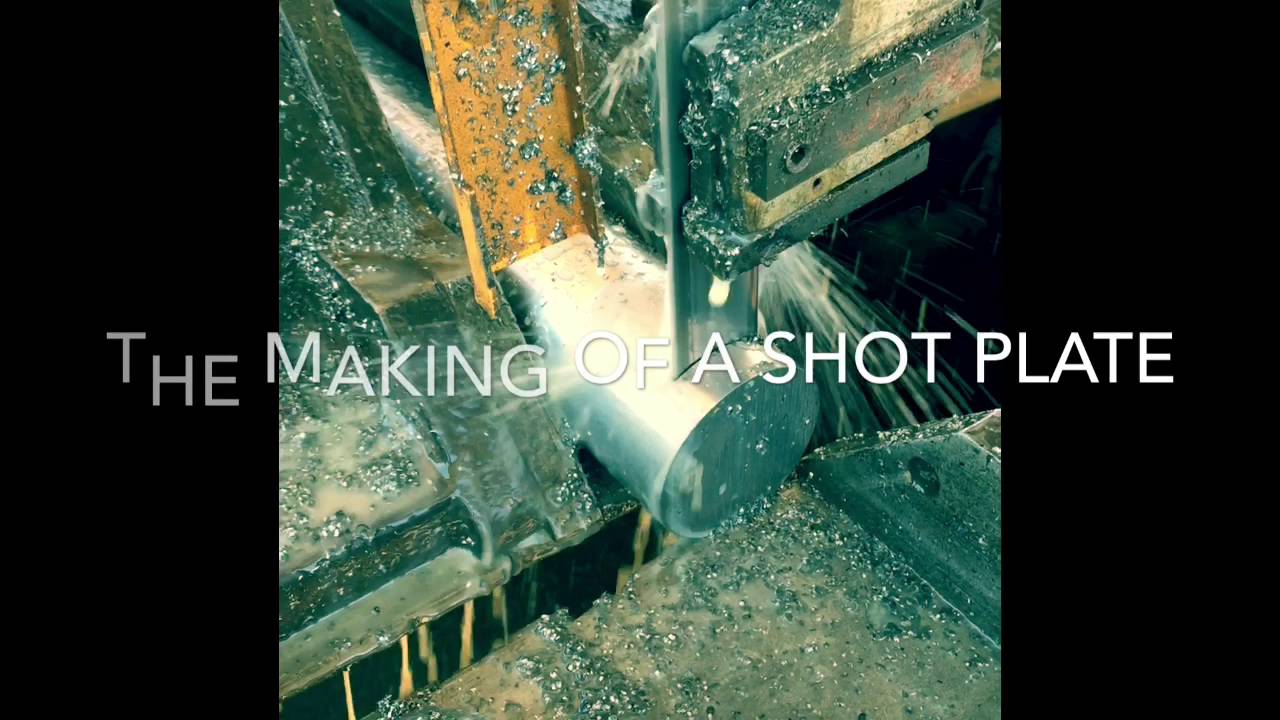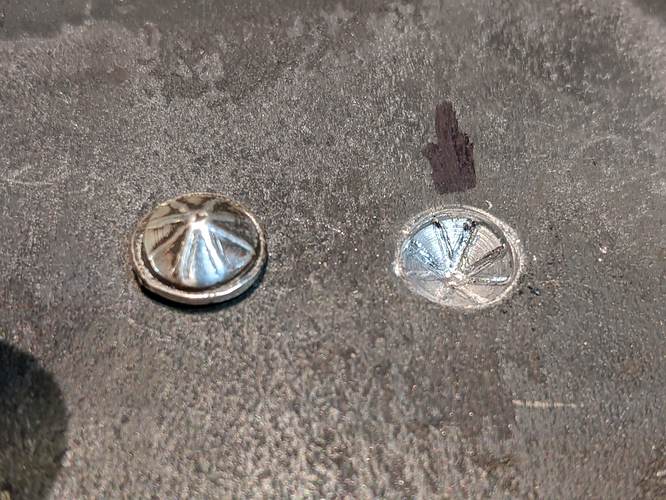I have been experimenting with what I think is a shot die. I am trying to make repeatable small leaves with stems to solder on a piece as an embellishment. I can’t find much in the archives, but did find an old Kevin Potter youtube. I am interested in how to make and use them. Any help or suggestions of sources are appreciated. Thanks…Rob
Hi Rob,
see also jen’s below post “name that filigree component”
i replied with many links about shot die use videos and resourse
julie
Thanks, I will take a look…Rob
I know that I can buy shot dies from several suppliers, I am looking for guidance on how to make my own.
I use these from time to time and have acquired a small collection but the equipment is very specialized (aka Big and Expensive) so making my own is not in my future. Here is a link to a video that shows someone in action. It’s very short, less than 2 minutes but has music so be prepared to hit “mute”. This is a one-man shop called “Buffalo Rutland”. I have purchased from him and he’s very skilled. He also does custom orders which would be so much cheaper than building a studio. ![]() He also has good vids on how to use the shot plate.
He also has good vids on how to use the shot plate.
Thanks, I have looked at this site briefly, but will go back for a better look. I am familiar with making stamps and tempering steel, so this all makes sense…Rob
I don’t have access to the tools needed for working with tool steel, so I’m wondering if maybe one could use Devcon plastic steel putty to make a shot plate or die.
Devcon seems solid enough, BUT>>>>> it will shatter when the pressure is applied. Using a hammer and striking from above, will shatter devcon. great to back stones, but for a shot die, not so good.
Aggie
Mary, I’ll bet you have more ability to work steel than you realize. For one thing, mostly the work you do will be with the steel in softened state. At that point, it isn’t very different from most of the other metals metalsmiths work with. The harder ones, at any rate. Think many gold alloys, etc. Yes, its harder than silver, but that does not say much. For one thing, understand that many of the cutting tools, from files to sawblades, to various burrs (especially high speed steel or carbide burrs) are actually made with tooth designs optimized for steel. You can use them in ordinary flex shaft or dremel type tools. Even fairly low cost motorized tools work fine, and hand carving with manual tools works too. Gravers, chisels… whether hand pushed or driven with a hammer or power handpiece, work great. Have you tried working with steel? It’s easier than many people realize. Now, for a shot plate, you are better off i you can heat treat it after you’ve cut the design. But if you dont have the ability to do this, any good machine shop should be able to do it for you. Basic hardening and tempering is not complex. You can do it with a torch for smaller items. No fancy kilns needed. And depending on the design and needs, and steel used, it may not even need heat treating. Try it. With a little practice, you may find that you can do it faster in steel than liquid steel, even with limited tools.
The big mistake many beginning (or farther along) jewelers and metalsmiths make us putting steel on a holy pedestal, not to be worked by mere mortals, just because its used for tools. But one reason steels are used for tools and much else is precisely because they can be worked with such versatility. The main precautions are that some techniques differ, or use processes where tools and supplies used for steels should not be mixed with similar items used for precious metals.
You’ll find that dies and shot plates made with liquid steel, or carved from acrylic, may have unacceptably short lives. Sometime good only for a single impression. That can be fine for the needs of a unique project, but less so for production tools
Peter…Thanks for encouraging us to work in steel. I have been engraving it and using the engraved pattern as a roll plate for silver, copper and brass. It works great. I also have been making chasing tools out of oil and water heat treatable steel rods and it is, as you suggest, very workable. I get a lot of guidance out of the usual jewelry how to books, but especially from The Art of Stamping by Matthieu Cheminee. I have started to dug into soft steel blocks with the various tools that you suggest to make a shot die. It is fairly easy to do, but takes a lot of time. I will post more when it happens…Rob
My first shot die. Drilled a shallow 8 mm hole and then added some detail with a high speed turbine and a tiny 1/16 carbide end mill. I skipped trying to hammer the bead into the hole and just used my hydraulic press. It all works great and is repeatable. Now to design some more shapes that I can whittle into this piece of mild steel…Rob
So now that I can make shots plates, I will probably buy them. As a design element, I can’t figure out what to do with the pieces I make in them other than earrings, pendants and beads. I feel like
i am tying up a lot of metal in one small piece…Rob
I also have a few shot dies purchased from several different people. Some are better than others. Some dies seem to be made in a way that the metal pieces tend to get stuck quite badly. I have one die that is just a pleasure to work with. Nothing seems to get stuck in there.
Rob, I see what you mean with having too much metal tied up. One of the advantages of making your own shot dies would be that you could make them as shallow as you want, so you can limit the amount that makes up the design.
I was thinking about making some tiny bits of embellishments out of gold, so I am also trying to solve the question how I can get shallower embellishments without using up a large amount of gold.
Thanks! Keep us posted on how it goes. I will do the same…Rob

